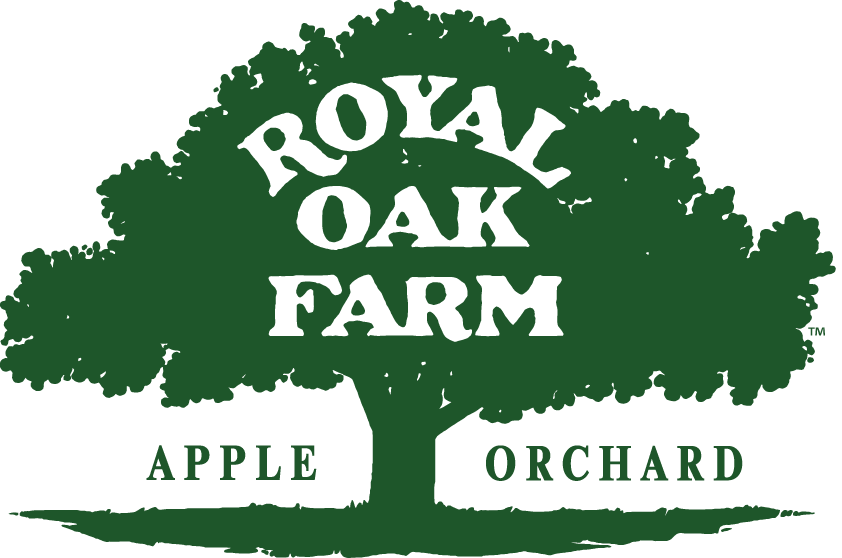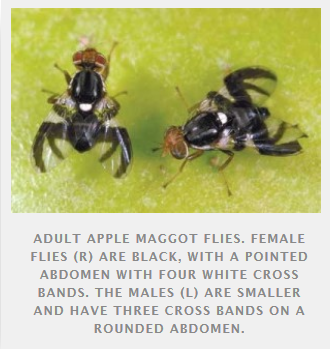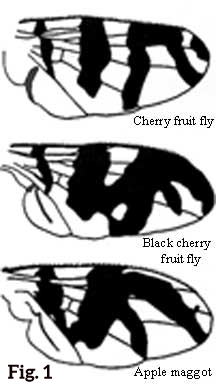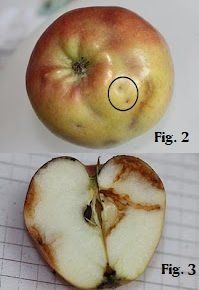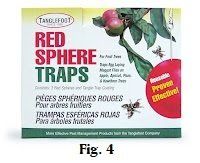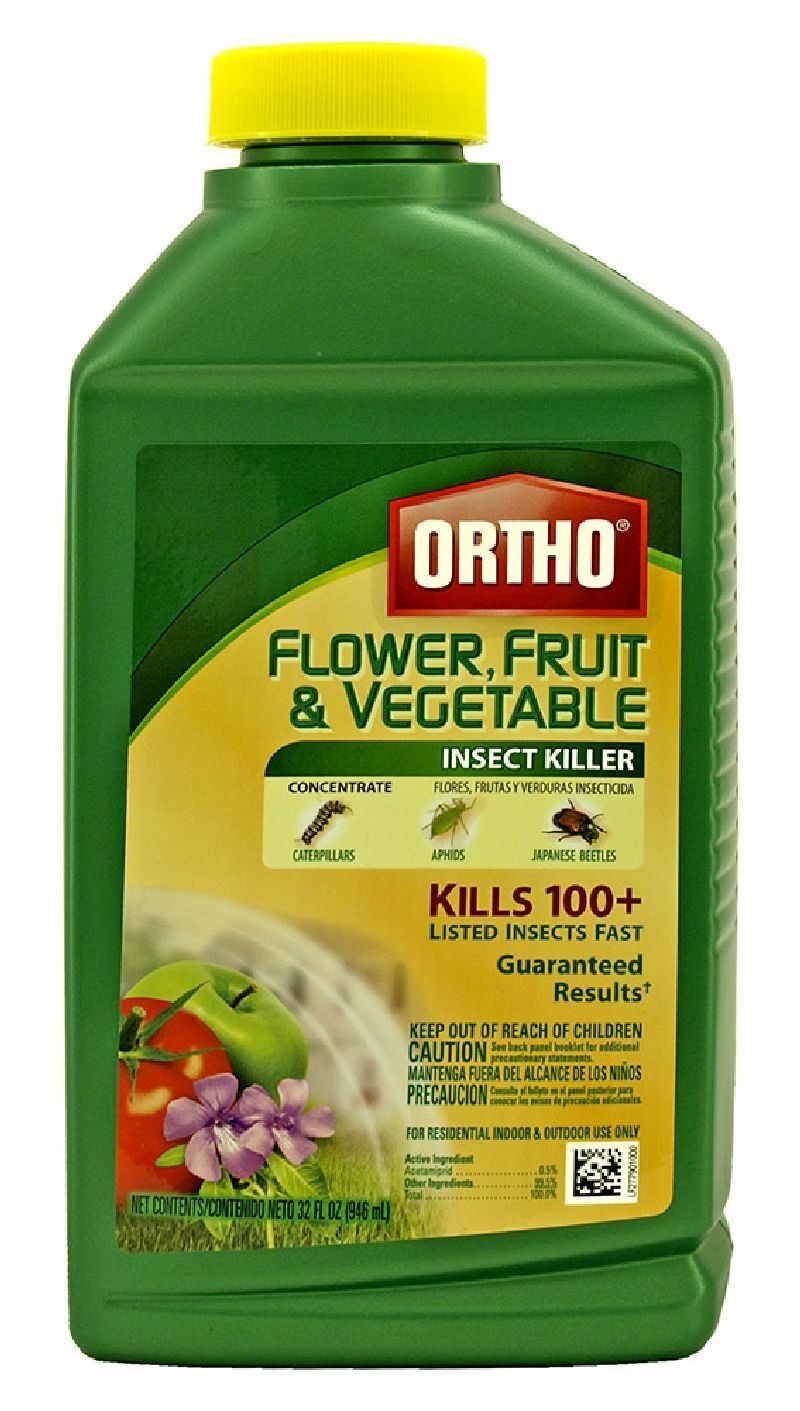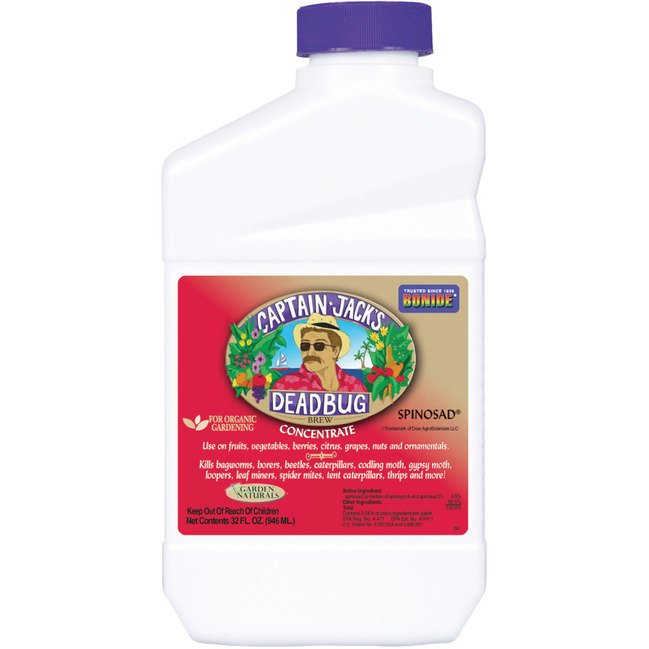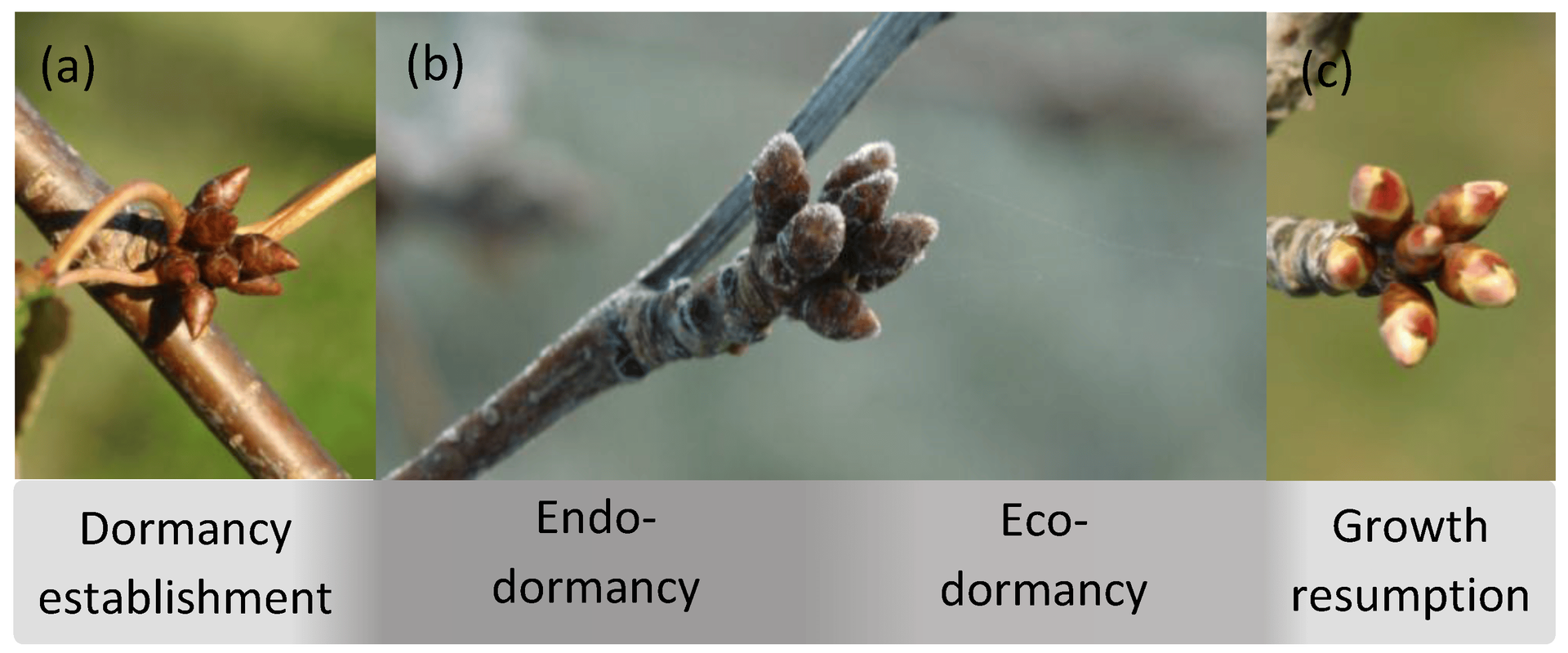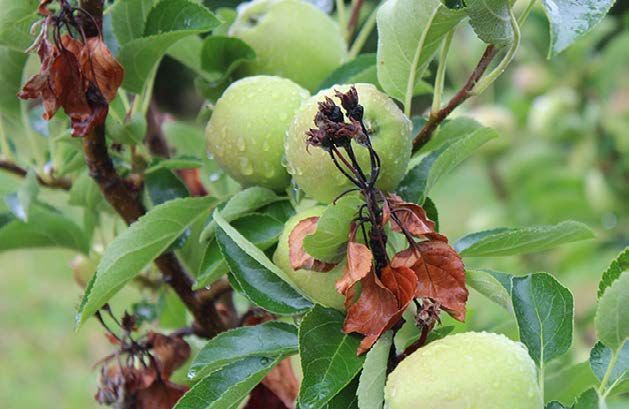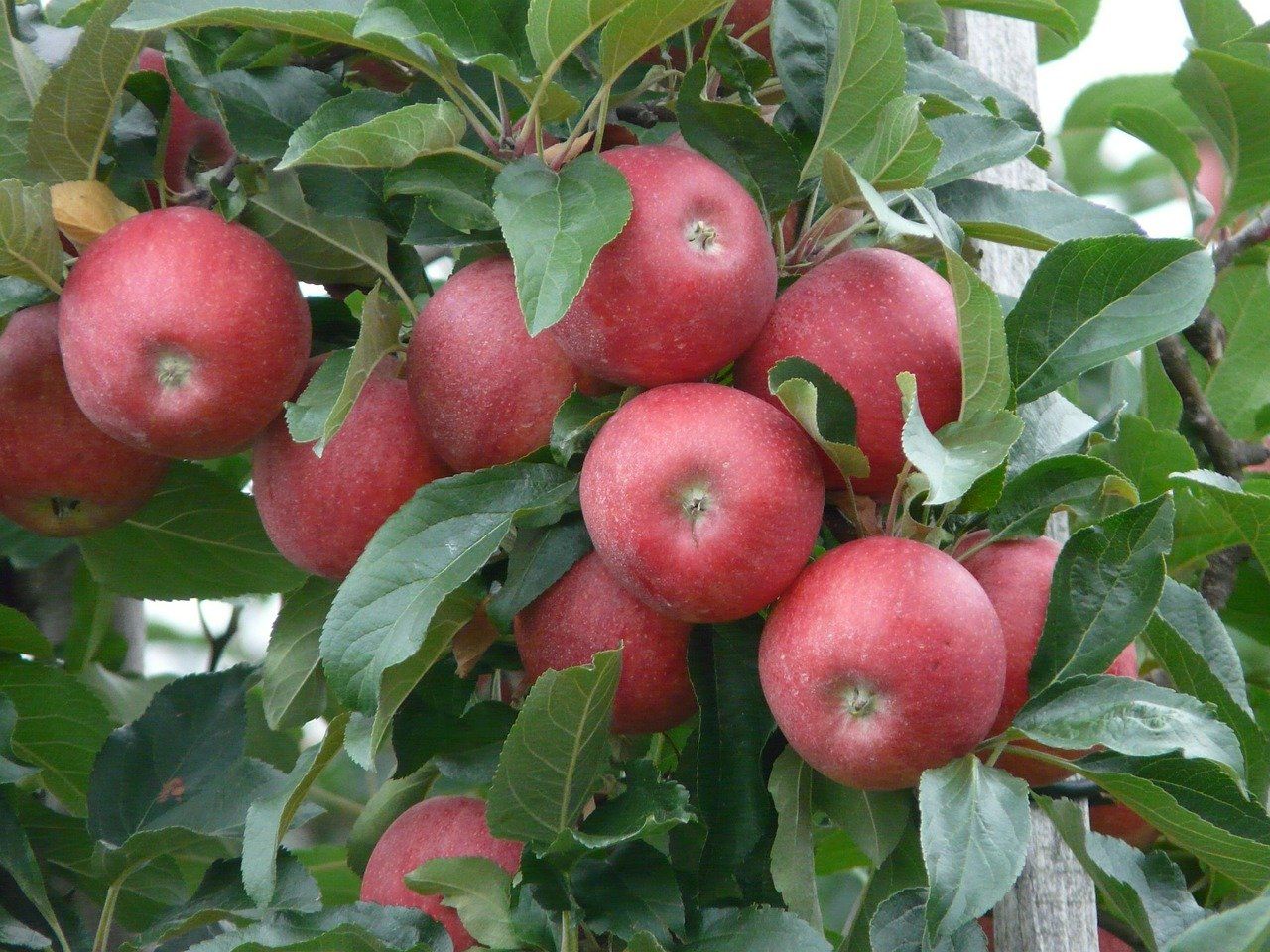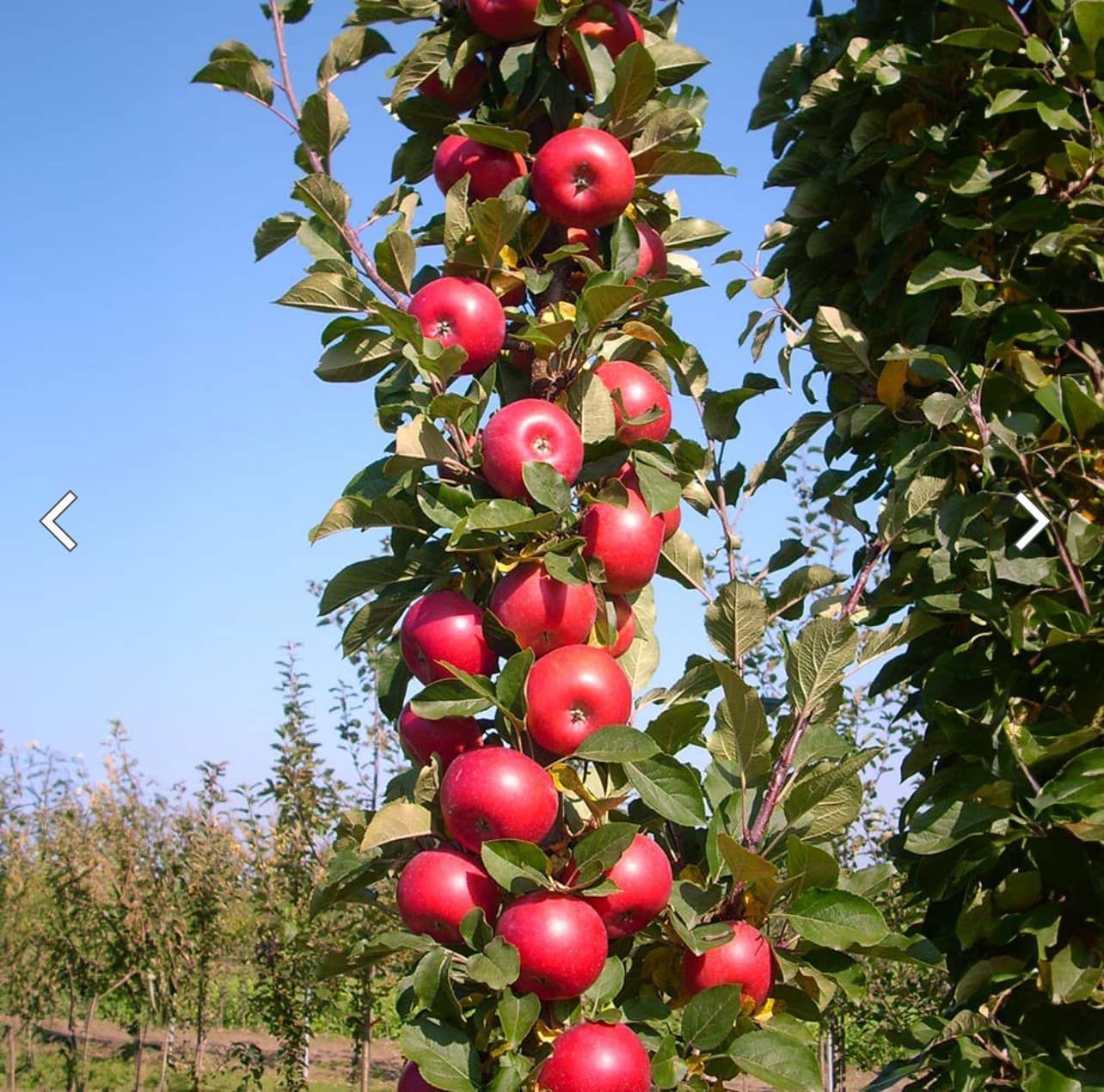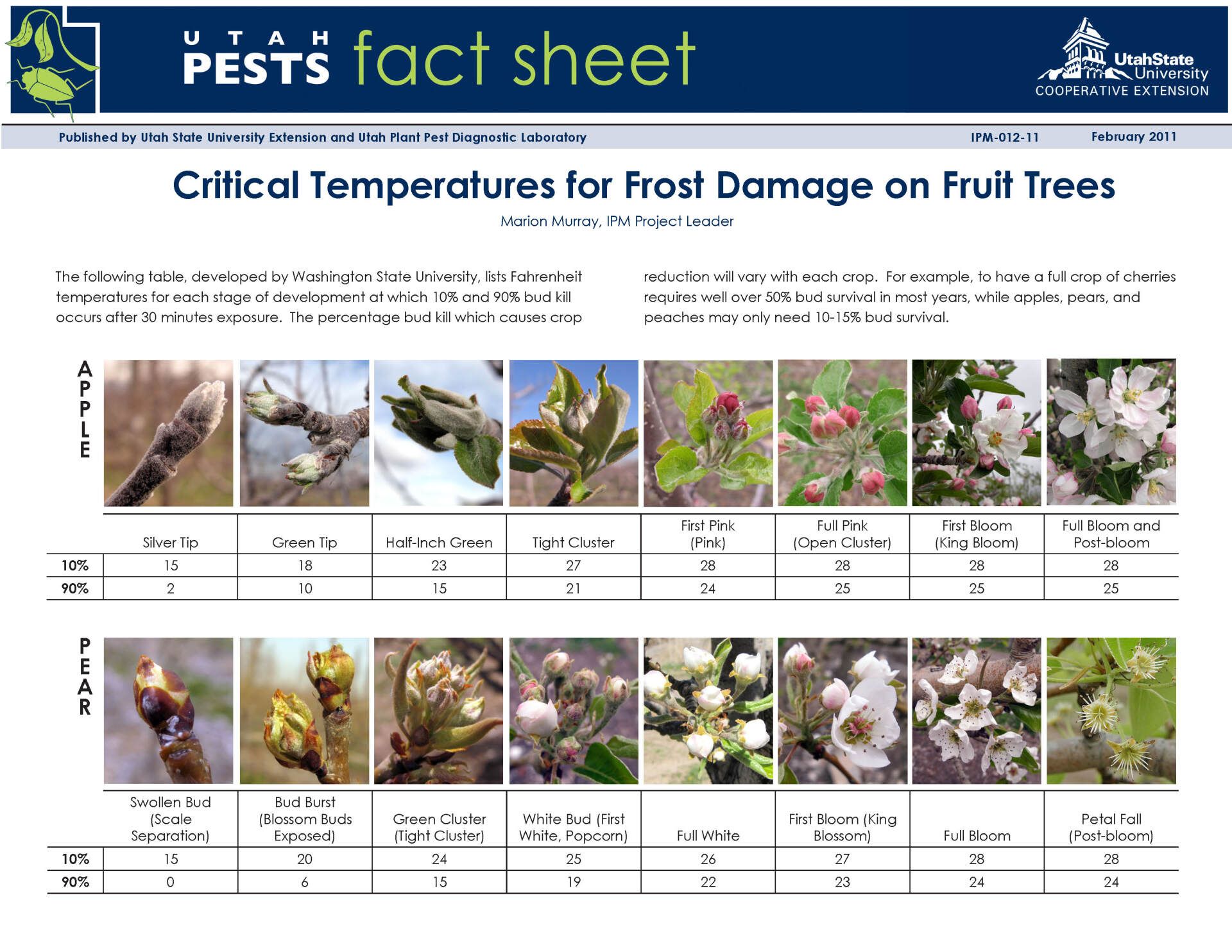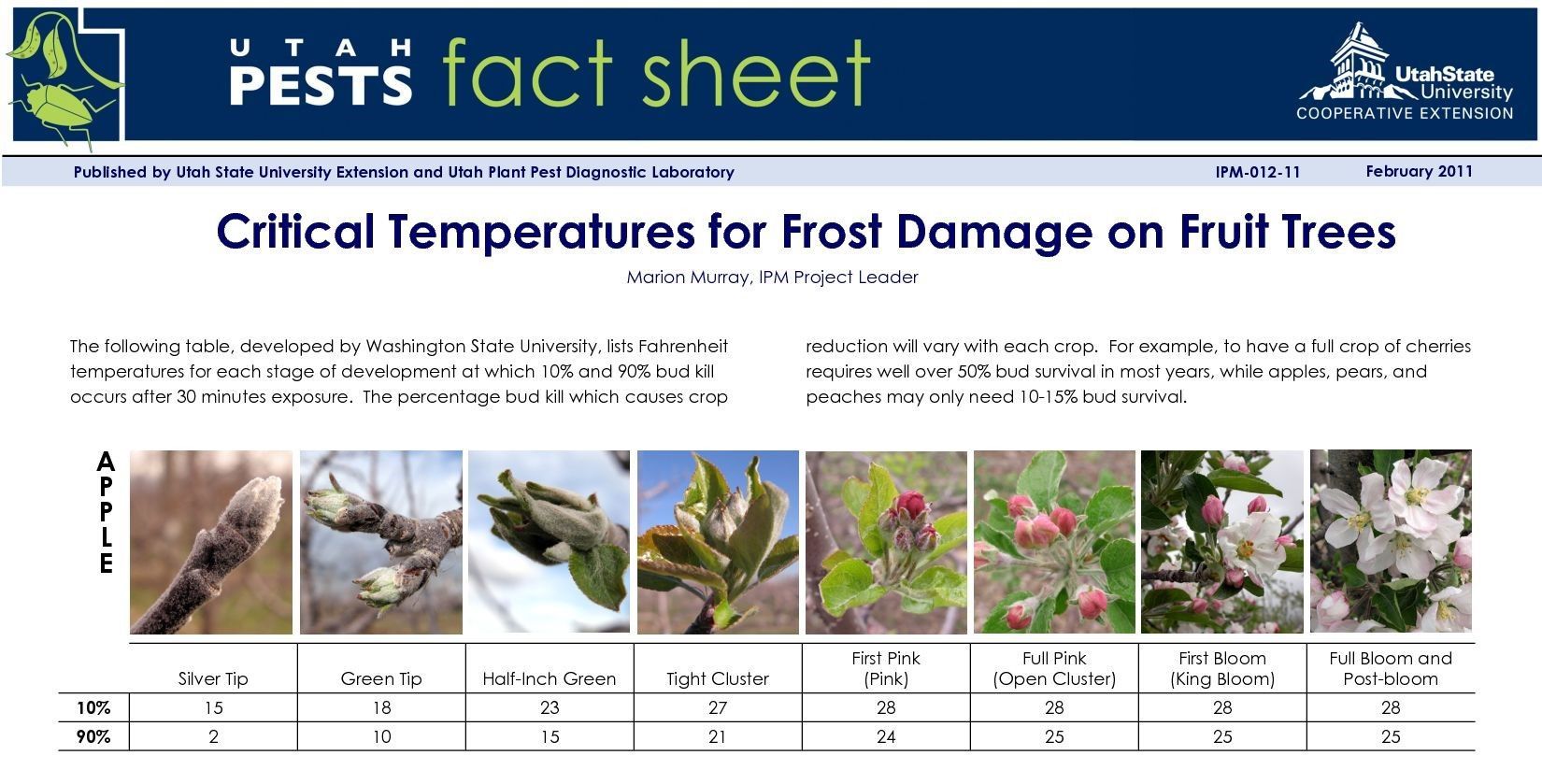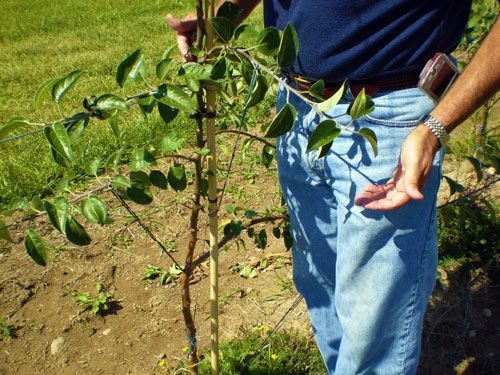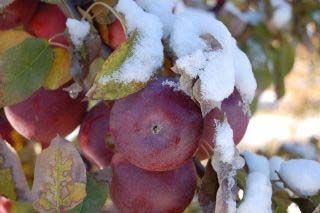It only takes one non-baited trapped fly to determine that they have arrived to the orchard! The apple maggot (AM) is native to the Midwestern US and is considered a primary pest, along with plum curculio (PC), and codling moth (CM), which have been covered in previous posts. The adult apple maggot fly resembles a small housefly in size, with a black body, eyes of dark red, with the thorax and abdomen having distinctive white or cream colored bands. The AM is distinguished from other similar, and closely related flies, like cherry fruit fly and black cherry fruit fly, by the variation in dark banding on its wings (See Fig. 1). Apple maggot flies usually emerge first in unsprayed apple trees. Females are capable of laying eggs 7-10 days after they emerge. Then later in the summer (early July-August) mature females begin to immigrate into the edges of commercial orchards or into your yard.
Getting Ready for Apple Magott
Apple Maggot Arrival Time
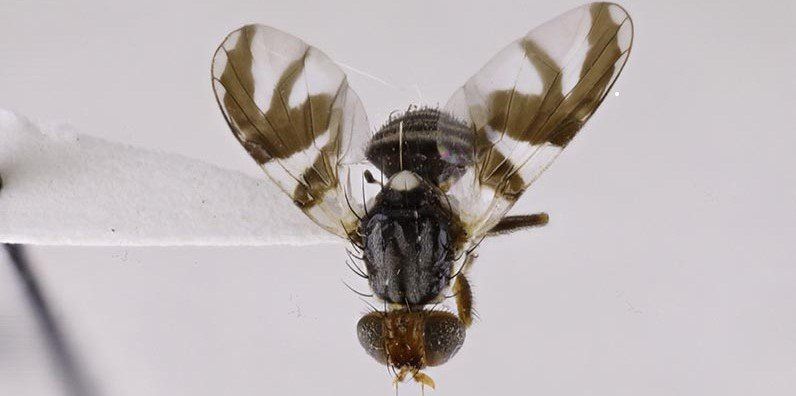
It's time to set apple magott (AM) traps in your trees or orchard. We usually do this around July 4, but with the extreme heat we have experienced, I decided it best to set them a few days early. We are at about 970 DD from January 1 as of today at 5:07 PM, so if you have not done so, it is time to get out the apple maggot traps and get them set.
Monitoring For Apple Maggot
Control for Apple Maggot
As always, be sure to follow all label directions on the bottle for proper application.
For additional information, see the following fact sheets and guides which are available from local university extension services:
https://irp-cdn.multiscreensite.com/45c0e18f/files/uploaded/apple_maggot_fact_sheet.pdf
Reference in this blog to any specific commercial product, process, or service, or the use of any trade, firm, or corporation name is for general informational purposes only and does not constitute an endorsement, recommendation, or certification of any kind by Royal Oak Farm, Inc. People using such products assume responsibility for their use in accordance with current label directions of the manufacturer.
Backyard Orchard Management @ Royal Oak Farm Orchard
Backyard Orchard Management @ Royal Oak Farm Orchard is a blog for the home fruit tree grower providing information about fruit tree management, fruit tree pruning & training and Integrated Pest Management from the IPM Specialist and Certified Nurseryman at Royal Oak Farm Orchard, a 22,000 tree apple orchard and agri-tourism operation located in Harvard, Illinois.
Click or tap any title to read that post.

